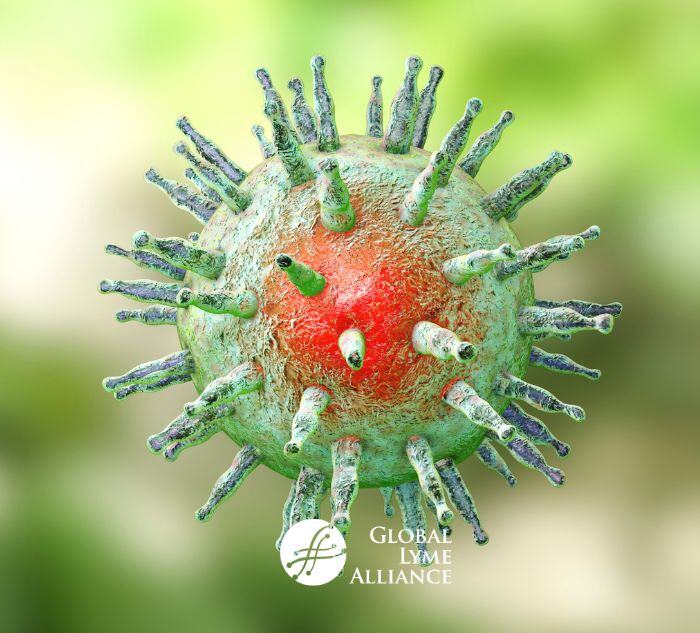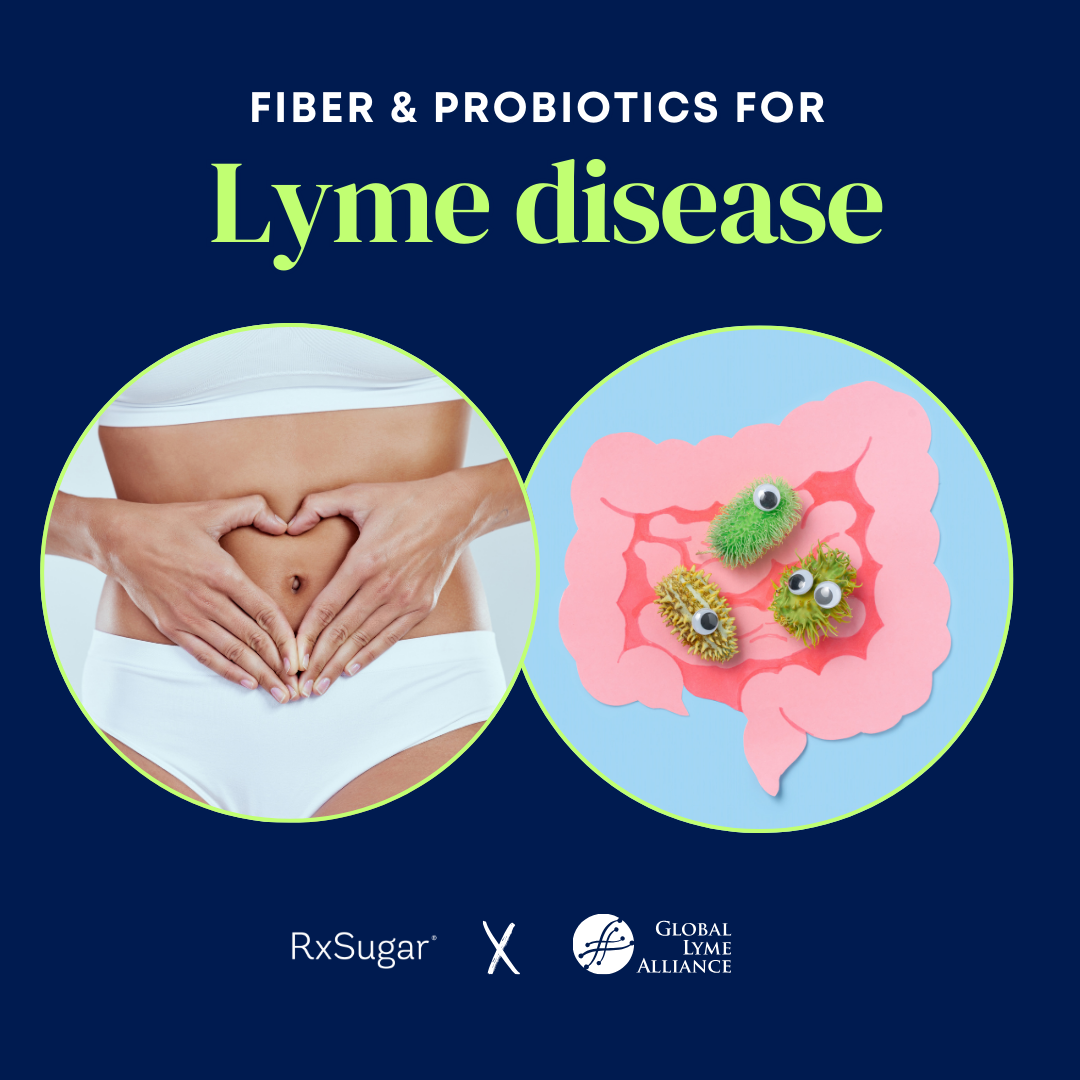
Understand the intricate relationship between Epstein-Barr Virus (EBV) and Lyme Disease through the experience of Jennifer Crystal. Learn how they coexist and impact each other in chronic illness.
Whenever I write about my chronic tick-borne illnesses Lyme disease and babesiosis, I always add “as well as chronic active Epstein-Barr virus (EBV).” This is because for me—and for many Lyme disease patients—EBV and Lyme go hand in hand. Though one is a virus and one is a bacterial infection, the two wreak havoc on the body together, and a flare of one can lead to a flare of another.
I know this now, two decades into my chronic illness journey. When I got mononucleosis, which is caused by the Epstein-Barr virus, in 2003, I had no idea that I also had underlying tick-borne infections or that the two could impact each other. Since 1997, I’d had all sorts of strange symptoms, ranging from an on-and-off-again flu to migraine headaches, hypoglycemia, asthma, trembling hands, and hives. Each of these complaints had been treated individually—often brushed aside as stress or “just feeling run down”—and tick-borne illnesses were never considered. Ironically, every time the flu-like symptoms came back, I would worry that I had mono. I knew that virus could take a while to get over, and I didn’t have time to be sick. But the tests were always negative.
Until, days before I was to start a job as a Head Counselor at a summer camp in Maine, a sore throat and mounting fatigue led to a mono test that actually did come back positive. Now I really didn’t have time to be sick. I had just finished a strenuous year teaching high school English and Journalism in Colorado, had driven cross country by myself, and was supposed to spend only a few days with family in Connecticut before heading off to Maine.
The universe had other plans, but I didn’t agree with them. I knew that some people got over mono in a few weeks, while some cases took longer. I took a steroid to alleviate symptoms and speed up recovery. I rested in Connecticut for two weeks. And then, with my doctor’s permission, I set off for camp, where I so desperately wanted to be.
Camp needed me, too, as the oldest returning Head Counselor. But my being there that summer wasn’t fair to anyone—not to the campers, not to the directors, not to me. Camp needed me to give my all. I could for a short while, but then the fatigue of mono came raring back, and I found myself dragging my body to activities.
By the end of the summer, I was bedridden. By fall, I was no better. I slept twenty hours a day and developed new symptoms like burning extremities and hallucinogenic nightmares. Tests for mono remained positive, and tests for Epstein-Barr titers remained high. My doctor explained to me that people who have had mono will always test positive for Epstein-Barr virus, but that once the mono goes away, the Epstein-Barr virus titers should decrease (the same way those of us who had chicken pox as kids always carry that virus even though it’s not active). In my case, the titers remained high, which is known as chronic active Epstein-Barr virus, or chronic mono. The doctor told me it might take a couple years for me to get better.
I was devastated. I was supposed to work as a ski instructor in the Rocky Mountains that winter. That dream was shattered. Unable to support or care for myself, I had to surrender my independence and move back with my parents in Connecticut.
I blamed myself for the chronic active Epstein-Barr virus because I’d pushed my body to go to camp. While that choice probably didn’t help my recovery, there were much larger, physiological explanations for my immune system’s inability to fight off mono: Lyme disease, babesiosis, and ehrlichiosis, which my body had been harboring since an unknown tick bite while at camp in 1997.
For the first two years that I had chronic active EBV, I spent so much energy trying to convince people that I really was sick, not lazy; that EBV was a legitimate diagnosis; and that I wanted to be working, socializing, and exercising as I once had, but could barely move from bed—that I didn’t consider whether anything else might be going on in addition to EBV, rather than instead of it.
One day in 2005 while drying my hair, I noticed circular rashes on my elbows when I saw my raised arms in the mirror. I’d become so accustomed to writing symptoms off as nothing, but the naturopathic physician who’d been treating me for EBV said, “Those look suspiciously like the bullseye rashes of Lyme disease,” which he explained can show up months or years after a tick bite, in various places on the body. He said, “I’ve started to suspect you have something additional going on, like an underlying infection, because otherwise you would be getting better.” He sent me to a Lyme Literate Medical Doctor (LLMD) who ran tests that showed I indeed had three tick-borne diseases. The doctor traced these illnesses back to a red rash I’d had on my arm in 1997, just before all my symptoms began. He concluded that the tick-borne diseases had come out in full force when I got mono, because my immune system was so overtaxed that it couldn’t fight all the illnesses; instead, it was walloped by them.
Once I was adequately treated for tick-borne illness, my EBV symptoms quieted, but they still flare from time to time. Because Lyme and EBV symptoms can be so similar (flu-like symptoms, fatigue, achiness, low grade fever), sometimes it’s hard for me to tell which one is activated. Having spent so long in the throes of tick-borne disease treatment and recovery, I sometimes forget that I have EBV, too. But when symptoms flare, it’s important for me to take a step back and ask, is this Lyme, or could this be EBV? Sometimes it’s both and a slight change in a supplement can help either. Sometimes it’s EBV and I need to rest. Sometimes it’s babesiosis and I need a specific anti-malarial medication.
Scientists don’t yet know why there seems to be such a correlation between Lyme and EBV, though they have discovered EBV may be a leading cause of Multiple Sclerosis[i], a Lyme imitator. We know from emerging science and from patient experience that EBV seems to impact certain autoimmune disorders and infections, and vice-versa. Until the science catches up to the experience, the important thing is for patients with overlapping symptoms to keep both EBV and other medical conditions like Lyme disease in mind. If they’ve only been diagnosed with one, they may only be fighting half the battle.
[i] https://www.nih.gov/news-events/nih-research-matters/study-suggests-epstein-barr-virus-may-cause-multiple-sclerosis

Jennifer Crystal
Writer
Opinions expressed by contributors are their own. Jennifer Crystal is a writer and educator in Boston. Her work has appeared in local and national publications including Harvard Health Publishing and The Boston Globe. As a GLA columnist for over six years, her work on GLA.org has received mention in publications such as The New Yorker, weatherchannel.com, CQ Researcher, and ProHealth.com. Jennifer is a patient advocate who has dealt with chronic illness, including Lyme and other tick-borne infections. Her memoir, One Tick Stopped the Clock, was published by Legacy Book Press in 2024. Ten percent of proceeds from the book will go to Global Lyme Alliance. Contact her via email below.






